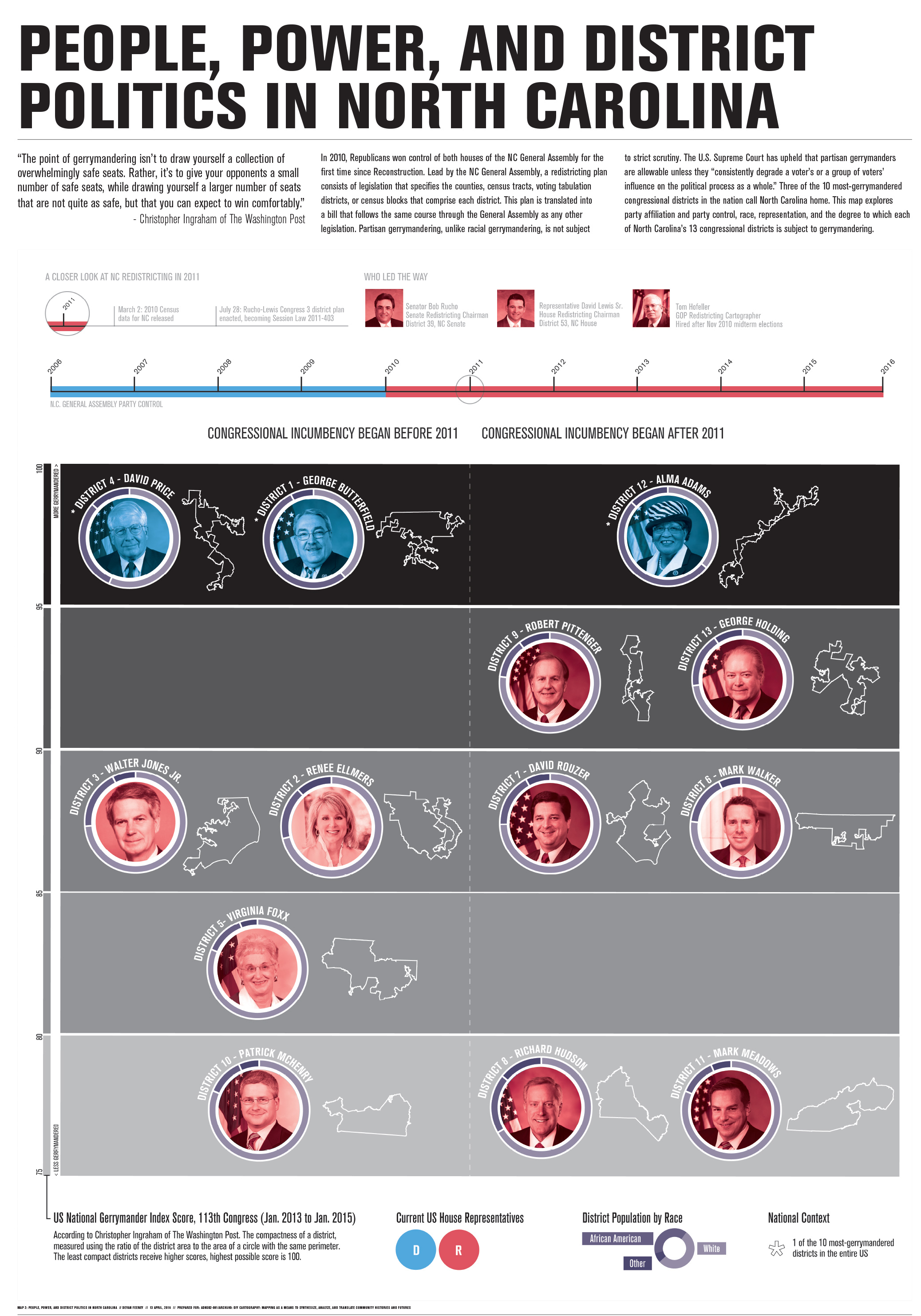 PEOPLE, POWER, AND DISTRICT POLITICS IN NORTH CAROLINA
PEOPLE, POWER, AND DISTRICT POLITICS IN NORTH CAROLINA
“The point of gerrymandering isn’t to draw yourself a collection of overwhelmingly safe seats. Rather, it’s to give your opponents a small number of safe seats, while drawing yourself a larger number of seats that are not quite as safe, but that you can expect to win comfortably.” – Christopher Ingraham, The Washington Post
In 2010, Republicans won control of both houses of the NC General Assembly for the first time since Reconstruction. Lead by the NC General Assembly, a redistricting plan consists of legislation that specifies the counties, census tracts, voting tabulation districts, or census blocks that comprise each district. This plan is translated into a bill that follows the same course through the General Assembly as any other legislation. Partisan gerrymandering, unlike racial gerrymandering, is not subject to strict scrutiny. The U.S. Supreme Court has upheld that partisan gerrymanders are allowable unless they “consistently degrade a voter’s or a group of voters’ influence on the political process as a whole.” Three of the 10 most-gerrymandered congressional districts in the nation call North Carolina home. This map explores party affiliation and party control, race, representation, and the degree to which each of North Carolina’s 13 congressional districts is subject to gerrymandering.